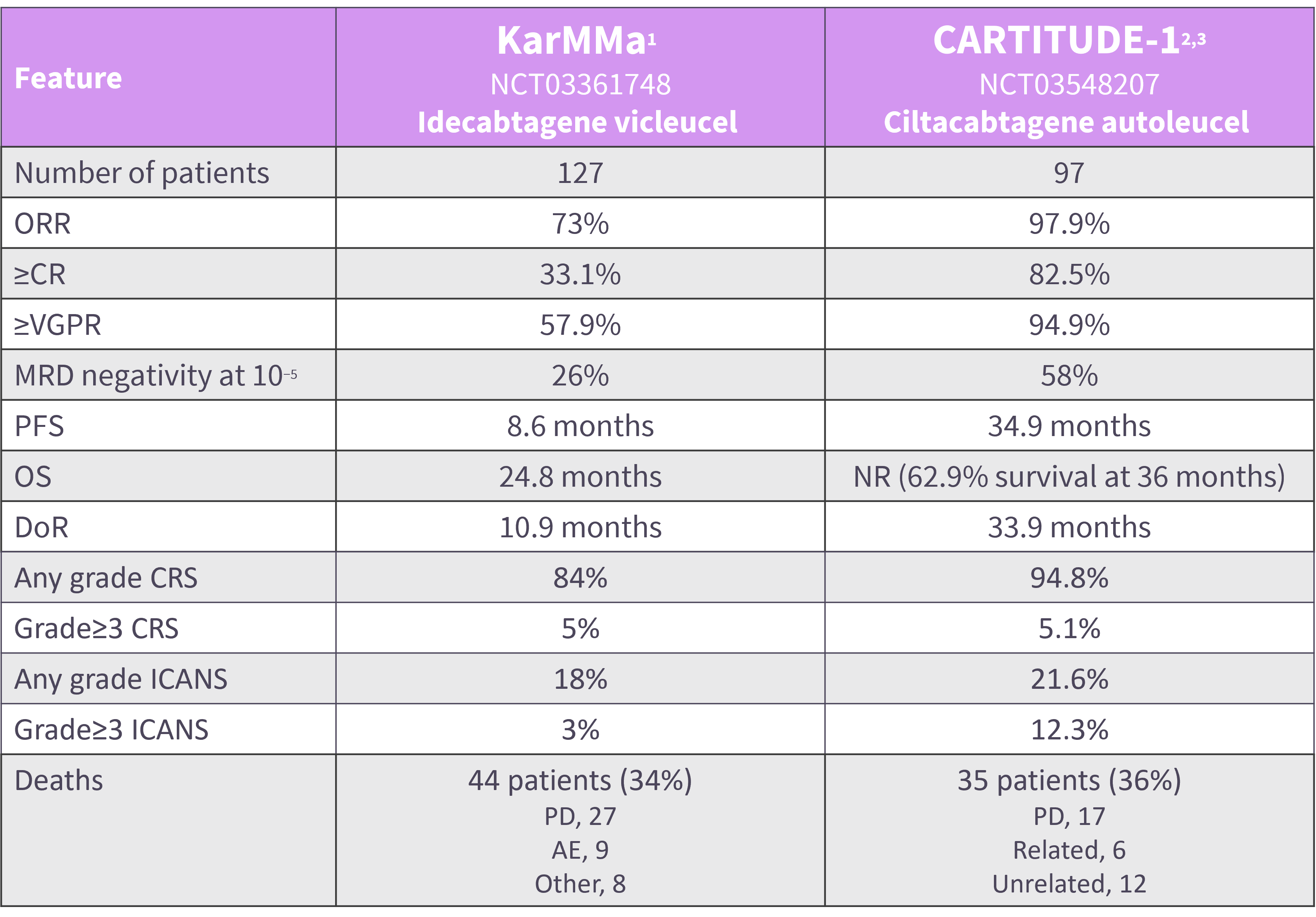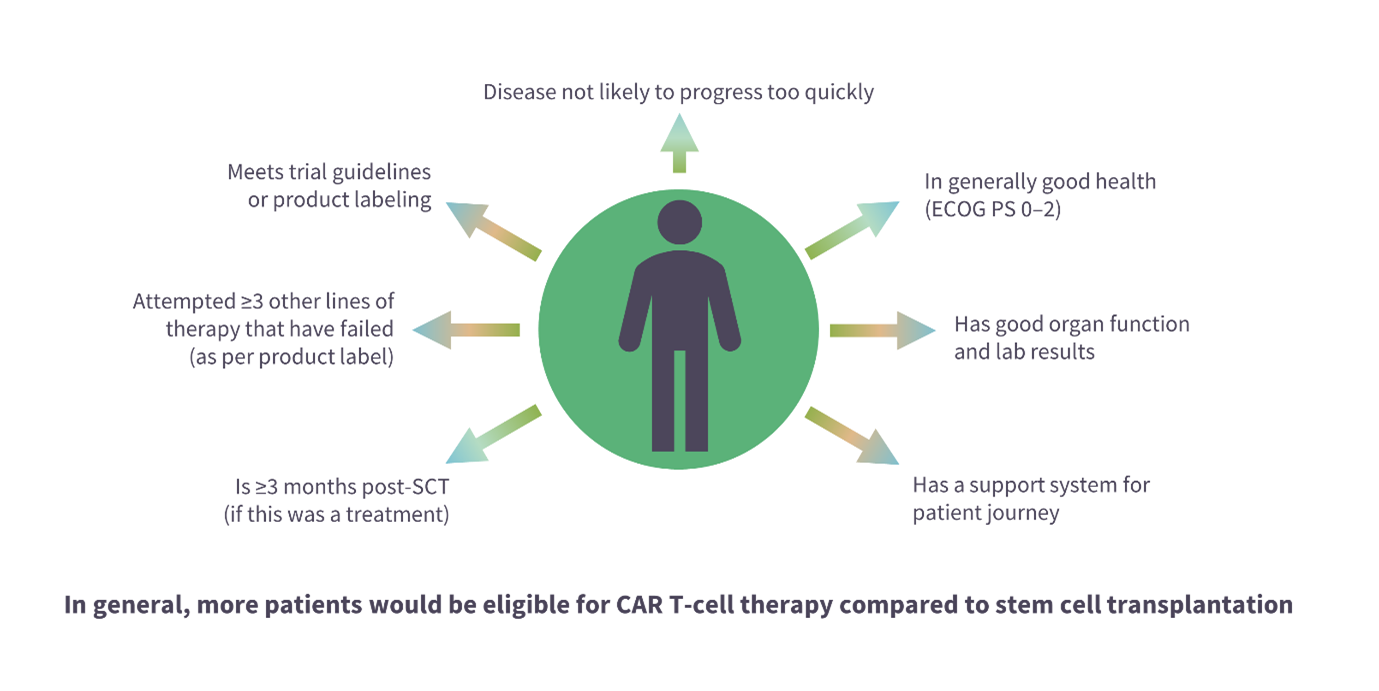All content on this site is intended for healthcare professionals only. By acknowledging this message and accessing the information on this website you are confirming that you are a Healthcare Professional. If you are a patient or carer, please visit the International Myeloma Foundation or HealthTree for Multiple Myeloma.
The Multiple Myeloma Hub uses cookies on this website. They help us give you the best online experience. By continuing to use our website without changing your cookie settings, you agree to our use of cookies in accordance with our updated Cookie Policy
Introducing

Now you can personalise
your Multiple Myeloma Hub experience!
Bookmark content to read later
Select your specific areas of interest
View content recommended for you
Find out moreThe Multiple Myeloma Hub website uses a third-party service provided by Google that dynamically translates web content. Translations are machine generated, so may not be an exact or complete translation, and the Multiple Myeloma Hub cannot guarantee the accuracy of translated content. The Multiple Myeloma Hub and its employees will not be liable for any direct, indirect, or consequential damages (even if foreseeable) resulting from use of the Google Translate feature. For further support with Google Translate, visit Google Translate Help.
Biomarkers and patient eligibility for CAR T-cell therapies in MM
Featured
Bookmark this article
Video series
The ins and outs of CAR T cells in the real world: Live Hub event
During the European Hematology Association (EHA) 2023 Hybrid Congress, the Lymphoma Hub and Multiple Myeloma Hub held a joint satellite session on the ins and outs of CAR T-cells in the real world.
Here the Multiple Myeloma Hub is pleased to share the presentation by Shaji Kumar, Mayo Clinic, Rochester, US, on biomarkers and eligibility for CAR T-cell therapies in multiple myeloma.
In this presentation, Shaji Kumar shares the currently approved CAR T-cell products for MM, discussing their up-to-date clinical data (Figure 1). He also shares the limitations and logistical challenges facing the implementation CAR T-cell therapy, as well as the current eligibility criteria for its use (Figure 2).
Figure 1. Efficacy and safety data for KarMMa and CARITITUDE-1*

AE, adverse event; CR, complete response; CRS, cytokine release syndrome; DoR, duration of response; ICANS, mmune effector cell-associated neurotoxicity syndrome; MRD, minimal residual disease; NR, not reached; ORR, overall response rate; PD, progressive disease; PFS, progression-free survival; OS, overall survival; VGPR, very good partial response.
*Adapted Chekol Abebe, et al.,1 Martin T, et al.,2 and Munshi, et al.3
Figure 2. Eligibility criteria for the use of CAR T-cell products*

CAR, chimeric antigen receptor; ECOG PS, Eastern Cooperative Oncology Group Performance Status; SCT, stem cell transplant.
*Adapted from Dave, et al.4
Watch or download the presentation to learn more about:
- The myeloma treatment paradigm
- The currently approved CAR T-cell products in multiple myeloma, including their up-to-date safety and efficacy data
- The impact of prior treatment with BCMA therapy on clinical outcomes with CAR T-cell therapy
- The challenges and logistics when considering CAR-T cell therapy
- The limitations of CAR T-cell products
- Eligibility criteria for CAR T-cell therapy
Key points
- Currently, there are no individual biomarkers to definitively determine eligibility for treatment with CAR T-cell therapy.
- Idecabtagene vicleucel and ciltacabtagene autoleucel are approved for use in triple class exposed RRMM; however, these patients
- are more likely to be of an advanced age and possess other comorbidities that may result in increased toxicity;
- are more likely to have been exposed to a BCMA-targeted therapy, which has been found to result in lower response rates;
- have typically faster rates of disease progression, meaning that CAR T-cells may not be produced in time; and
- have a high tumor burden and therefore increased risk of cytokine release syndrome and immune effector cell-associated neurotoxicity syndrome.
- Research is currently on the feasibility of CAR T-cell therapy in earlier lines of therapy is ongoing.
- Limited access to therapies as well as the costs associated with treatment are logistical factors when considering CAR T-cell therapy.
This activity was supported through an educational grant from Bristol Myers Squibb.
- Chekol Abebe E, Shiferaw MY, Admasu FT, et al. Ciltacabtagene autoleucel: The second anti-BCMA CAR T-cell therapeutic armamentarium of relapsed or refractory multiple myeloma. Front Immunol. 2022;13:991092. DOI: 3389/fimmu.2022.991092
- Martin T, Usmani S, Berdeja J, et al. Ciltacabtagene autoleucel, an anti-B-cell maturation antigen chimeric antigen receptor T-cell therapy, for relapsed/refractory multiple myeloma: CARTITUDE-1 2-year follow-up. J Clin Oncol. 2023;41(6):1265-1274. DOI: 1200/JCO.22.00842
- Munshi N. CARTITUDE-1 final results: phase 1b/2 study of ciltacabtagene autoleucel in heavily pretreated patients with relapsed/refractory multiple myeloma. Oral abstract #S202. European Hematology Association 2023 Hybrid Congress. June 11, 2023; Frankfurt, DE.
- Dave H, Jerkins L, Hanley P, et al. Driving the CAR to the Bone Marrow Transplant Program. Curr Hematol Malig Rep. 2019;14(6):561-569.DOI: 1007/s11899-019-00544-6.
Video series
The ins and outs of CAR T cells in the real world: Live Hub event
Your opinion matters
28 votes - 3 days left ...
Newsletter
Subscribe to get the best content related to multiple myeloma delivered to your inbox






